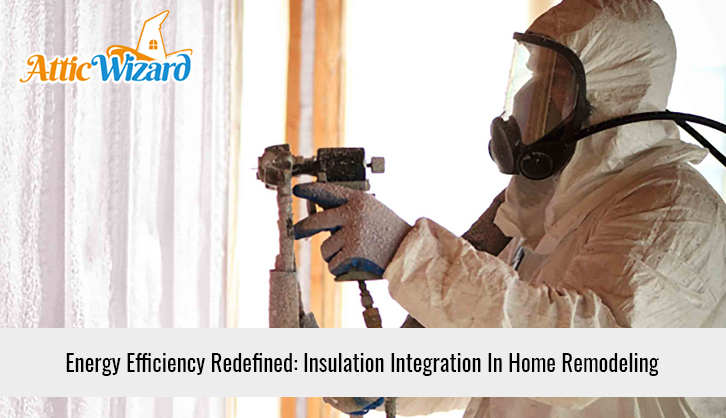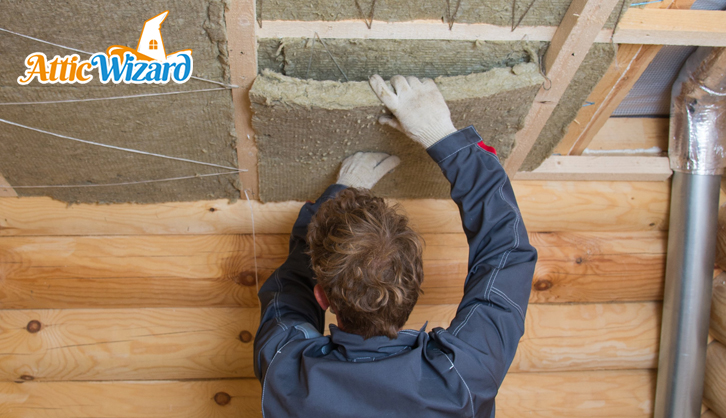Energy Efficient Remodeling: Insulation Integration in Home Remodeling
In an era where sustainability and energy efficiency are paramount, homeowners seek innovative ways to reduce their carbon footprint and lower their energy bills. One groundbreaking approach to redefining energy efficiency in home remodeling is the integration of insulation. By combining advanced insulation techniques with remodeling projects, homeowners can achieve unparalleled comfort, significant energy savings, and a greener future.

Let’s delve into the world of insulation integration and discover how it can transform your home into an energy-efficient sanctuary.
Enhancing Comfort and Temperature Control with Insulation During Home Remodeling
One effective way to enhance comfort and temperature control during home remodeling is by incorporating insulation. Insulation acts as a barrier, preventing heat transfer between the home’s interior and exterior. By insulating walls, ceilings, floors, and even attics, homeowners can experience improved thermal insulation, keeping the indoor environment more stable and comfortable throughout the year. Insulation helps to regulate indoor temperatures, reducing heat loss during winter and minimizing heat gain during summer.
This creates a more pleasant living space and reduces reliance on heating and cooling systems, leading to potential energy savings and lower utility bills. With insulation integration, homeowners can enjoy a more comfortable and consistent indoor environment in their remodeled homes.
Innovative Techniques for Optimal Energy Efficiency in Insulation Integration
Several innovative techniques are being employed regarding insulation integration for optimal energy efficiency in home remodeling. One such technique is spray foam insulation, which creates a seamless and airtight barrier, minimizing heat loss and air infiltration. Another technique involves installing reflective insulation materials, which reflect radiant heat and enhance thermal performance. Additionally, advanced insulation materials such as aerogel, which is lightweight and has exceptional thermal properties, are used for superior energy efficiency.
Furthermore, techniques like insulated concrete forms (ICFs) and structural insulated panels (SIPs) are gaining popularity due to their high insulation value and minimal thermal bridging. These innovative techniques in insulation integration enable homeowners to achieve optimal energy efficiency, reduce energy consumption, and enhance the overall comfort and sustainability of their remodeled homes.
Common Insulation Choices for Energy-Smart Home Renovations
Here are some common insulation choices for energy efficient renovation:
- Fiberglass insulation: Made of glass fibers, it provides good thermal performance and is affordable. Fiberglass insulation is available in batts, rolls, and loose-fill forms.
- Cellulose insulation: Made from recycled paper products, it offers excellent thermal performance and soundproofing. It can be blown into walls and attics to fill gaps effectively.
- Spray foam insulation: A versatile option that expands and hardens into a dense foam, creating an airtight seal. Spray foam insulation is highly effective in preventing air leaks and heat transfer.
- Rigid foam insulation: Composed of polystyrene or polyurethane, it provides excellent thermal resistance and moisture protection. It comes in rigid panels and is commonly used for insulating exterior walls and roofs.
- Reflective insulation: Utilizes a reflective material, such as aluminum foil, to reflect radiant heat away from the living space. It is often installed in attics to keep them cooler during hot months.
Common Challenges in Implementing Insulation Integration in Home Remodeling
Implementing insulation integration in home remodeling can face its fair share of challenges. One common obstacle is homeowners’ and contractors’ lack of awareness and understanding of the benefits and techniques involved. The limited availability of skilled professionals experienced in energy efficient home remodeling can pose a challenge.

Additionally, retrofitting insulation into existing structures may require careful planning and modifications to accommodate the insulation materials. Furthermore, budget constraints and the need for upfront investment can be hurdles. Overcoming these challenges requires education, collaboration with experts, and careful planning to ensure a successful insulation integration project.
Benefits of Investing in Energy Efficient remodeling for Homeowners
Investing in energy efficient home remodeling offers homeowners a wide range of benefits. Here are some key advantages:
1. Energy Efficiency
Energy-smart renovations significantly improve the energy efficiency of a home. By upgrading insulation, sealing air leaks, and using energy-efficient appliances and systems, homeowners can reduce their energy consumption.
2. Increased Comfort
Energy-smart renovations create a more comfortable living environment. Proper insulation helps maintain consistent indoor temperatures, reducing drafts, cold spots, and heat loss. This results in improved thermal comfort throughout the year, regardless of outside weather conditions.
3. Environmental Impact
Energy-smart renovations contribute to a greener and more sustainable future. By reducing energy consumption, homeowners can lower their carbon footprint and decrease greenhouse gas emissions. It is an environmentally responsible choice that helps mitigate climate change and protect the planet.
4. Improved Indoor Air Quality
Upgrading insulation and sealing air leaks can improve indoor air quality. Energy-smart renovations create a healthier living environment by preventing the infiltration of outdoor pollutants, dust, and allergens.
5. Increased Home Value
Energy-efficient homes are in high demand, and energy-smart renovations can boost the value of a property. Potential buyers recognize the long-term cost savings associated with energy efficiency and may be willing to pay a premium for homes with energy-smart features and upgrades.
6. Government Incentives
In many regions, government incentives, rebates, and tax credits are available for energy-smart renovations. These financial incentives can help offset the initial investment and make energy-efficient upgrades more affordable.
7. Future-Proofing
Energy-smart renovations ensure a home is prepared for future energy efficiency standards and regulations. By investing in upgrades now, homeowners can avoid costly retrofits or penalties that may be imposed.
Investing in energy-smart renovations provides homeowners with financial savings, increased comfort, environmental benefits, and the potential for higher home value. It is a wise investment that enhances homeownership’s short-term and long-term benefits.
Final Words
Energy efficiency is no longer just a buzzword in home remodeling; it has become necessary for a sustainable future. Insulation integration redefines energy efficiency by providing homeowners with enhanced comfort, significant energy savings, and positive environmental impact. By embracing this innovative approach, homeowners can transform their houses into energy-efficient havens that benefit their wallets and contribute to a greener planet. Embrace the power of insulation integration and embark on a remodeling journey that sets new energy efficiency standards
